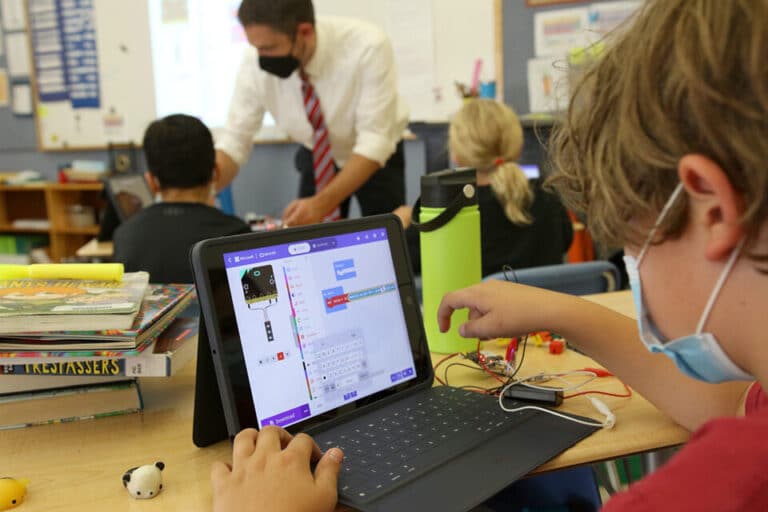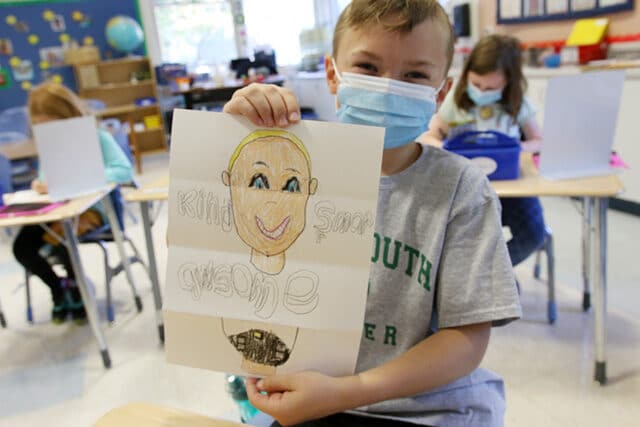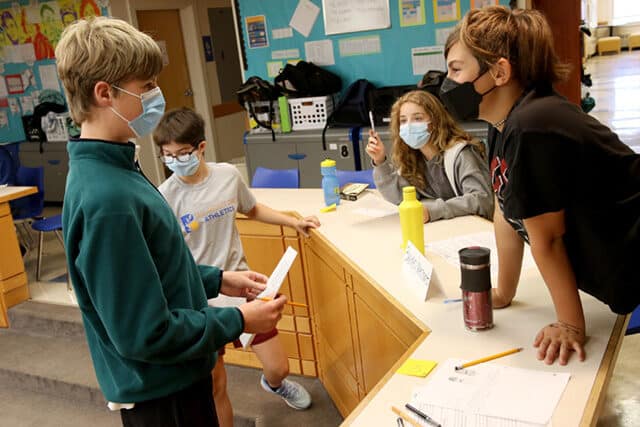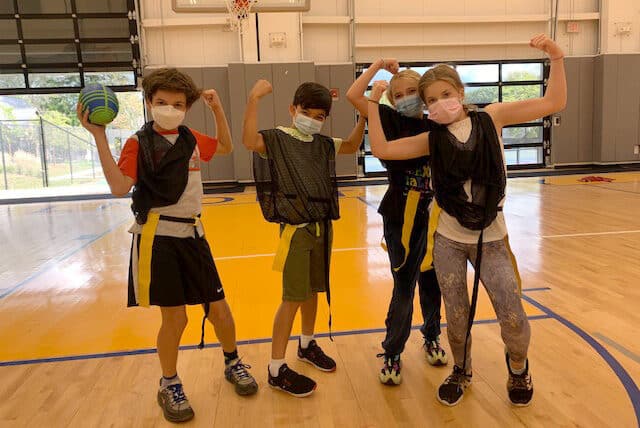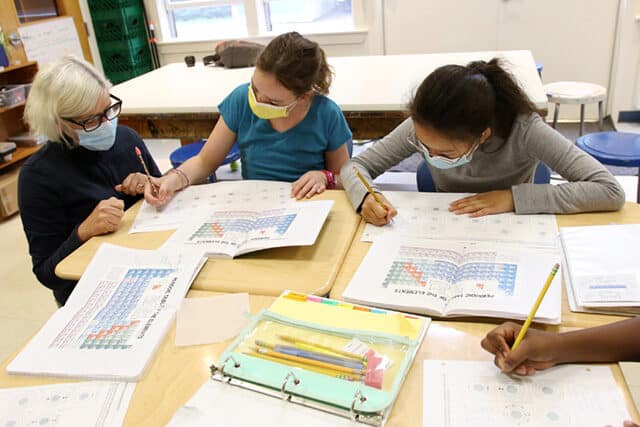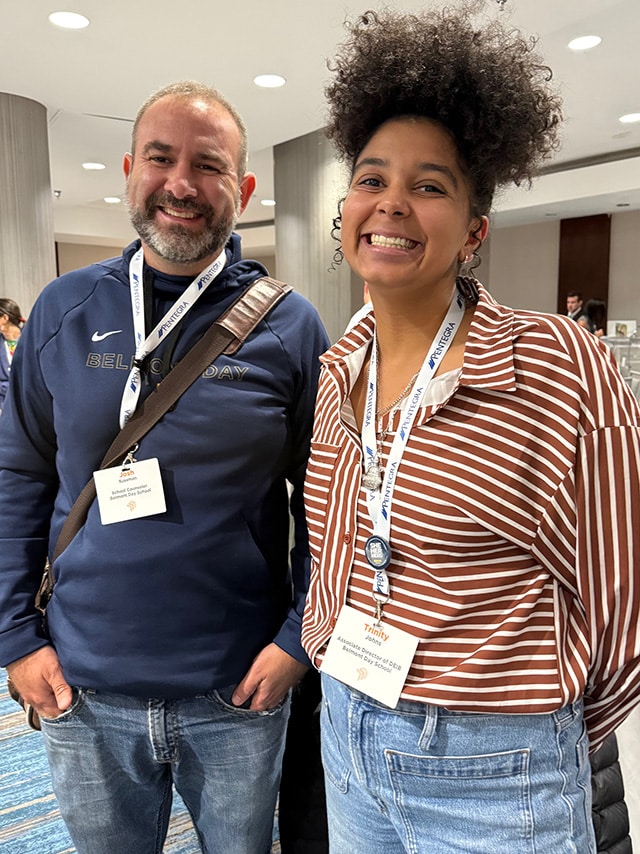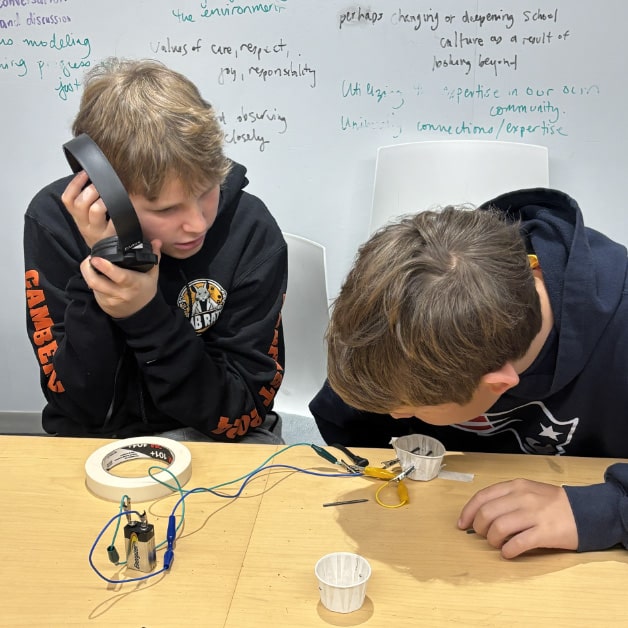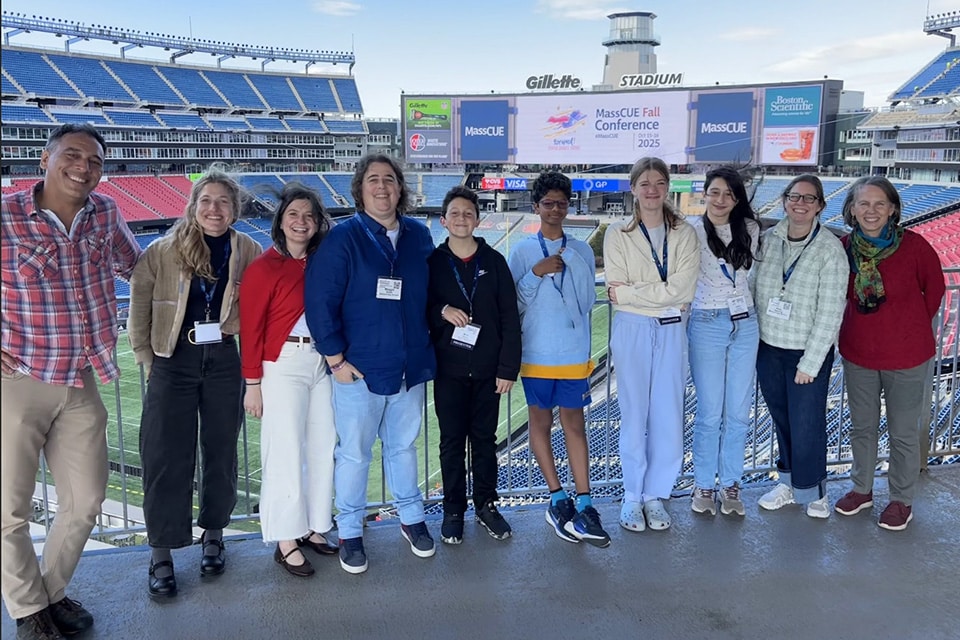Arts Update: Fourth Graders Learn Programming Basics
For the past few weeks students in fourth grade have become familiar with the micro:bit and the programming environment used to control it. Students connected the micro:bit to a LED and then programmed the micro:bit to make the LED flash different color patterns when certain buttons are pressed. Next up they will connect motors to the micro:bit to make a small rover move around their classroom.
– Kurt Robinson, innovation and art teacher
Kindergarten Explores Identity Through Self Portraits
Throughout the kindergarten year, we will be exploring the idea of identity. We started to think more about this concept by creating self-portraits with a mirror, a pencil, paper, and crayons. Once they had finished this drawing, kindergartners began the hard work of using clues in the illustration to guess who is who! They used physical information (like hair color and skin color) as well as personal characteristics (the background is pink, and that is my friend’s favorite color!) to guess who was the artist. Students will draw two more self-portraits during kindergarten, to showcase how they and their perception of themselves change over the course of the year.
– Missy Hartvigsen and Betty Pryor, kindergarten teachers
Middle School Drops Everything Except Their Books
DEAR (Drop Everything and Read) time has been part of our middle school English curriculum for the past few years, but this year we are lucky to have the whole middle school (including teachers) reading together! Research suggests that students who have regular access to books they choose and who are given time to read outperform their peers across academic subjects. Middle school students are busier than ever, and while many do want to make time in their lives for reading, it often falls off the priority list. By building time into the schedule for communal reading time, we are creating an important space for quiet, screen-free time, and sharing the joy of reading.
– Elisabeth Klock, middle school English teacher
PE Update: Fourth and Fifth Graders Are In the Game
As our students progress through the physical education ranks, they begin to engage in units that mirror the same fall sports our middle schoolers play. They start with the fundamentals in the lower grades and by the fourth and fifth grades, they are ready to compete and are learning how to bring the BDS core values onto the playing field.
The fourth grade completed a fitness and football unit this week. They got after it in the warm-ups, with a complete effort, and exhibited some promising skills in small-group gameplay.
The fifth grade completed a field hockey unit last week, working on stick skills and enjoying the crisp September weather. They mixed in tabatas to ensure that their fitness was off to a great start. This week they began flag football, running drills in Downing Gym and out on Claflin Field. If this month is any indication, our middle school teams will be in good shape for years to come.
– Alex Tzelnic, physical education teacher
28 + 3 = 1: Second Grade Adds Up To One Awesome Class
In second grade, we have been working on building our community and using our collective intelligence to create norms and guidelines to ensure friendship, fun, and learning for all. We created our own equation of 28 + 3 = 1 to illustrate our new community (28 amazing students + 3 dedicated teachers = 1 awesome second grade class)! As part of our social studies curriculum, we began working on our self-portraits to help us understand Who am I? as a part of Who are we? To help us with this project, we read The Colors of Us by Karen Katz. We admired the vibrant colors that Katz used in her illustrations while following the main character, Lena, as she travels through her community in the big city. We talked about the importance of respecting differences, embracing the beauty of diversity in every community, and learning more about the communities of which we are a part.
– Nancy Fell and Katie O’Brien, grade 2 teachers
Sixth Graders Add Some Punch Lines to Their Science Lessons
In their science classes, sixth grade students have been learning about atoms, elements, and the periodic table, which will help set the foundation for diving into future units this school year including astronomy and electricity. This week, students have been working on Bohr diagrams to help them better understand how the periodic table is organized. We’ve found in class that we’re also not opposed to some corny science jokes! For example, “Why can you never trust an Atom?” … “Because they make up everything!” Ask a sixth grader about our wall of bad science jokes. It will keep growing as students learn more and make up new jokes.
– Kaleen Moriarty, grade 6 science teacher
Eighth Graders Roleplay To Better Understand the Constitution
This week in social studies, eighth graders completed a Constitutional Convention roleplay activity. They were assigned to social groups from 1787 and learned what members of those groups were most concerned about while fixing the Articles of Confederation. Students then had the opportunity to visit members of other social groups and try to make deals with them. Sometimes they had similar interests and sometimes they had very different priorities. The activity ended in a vote on four of the many questions that were debated in the actual Constitutional Convention. The next day, students dove into the text of the Constitution of the United States to discover what was ultimately decided about the questions raised by those at the actual Constitutional Convention.
– Kate Burns, grade 7 & 8 social studies teacher
